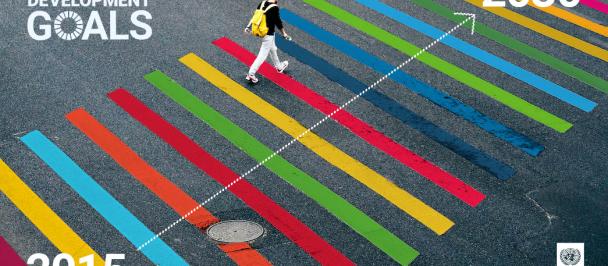Picture from Newatlas.
To galvanize bystanders and observers of violence to be active bystanders who actively intervenes, a bystander intervention strategy needs to effectively address barriers and the bystanders' needs. These are the areas that need to be considered to increase bystander engagement.
Recognizing red flags
We may lack the ability to recognise assaultive behavior because we are blinded by our personal beliefs, saturated gender stereotypes, and low awareness of GBVF in our society. For example, some people may not intervene in domestic violence because they think it is a personal conflict when in fact it is a communal problem that affects a big proportion of society. Successful bystander intervention strategies need to change our perception of violence. We can start with examining common observable behaviors of violence and being vigilant with what is happening around us.[1]
Building bystander confidence and competency
To intervene effectively, we need to feel comfortable and competent to step in. However, not everyone feels adept at dealing with conflict and have knowledge and means to help the victims. Unpreparedness can magnify the “bystander effect” which diffuses the responsibility to help. We may just pass by an incident that needs help and think someone else will help thus we do not need to. Learning about how to act and what to say can build our confidence and make us more prepared. We can go through real-life scenarios of witnessing GBVF and list possible options of discussion, resources, and assistance.[2]
Intervening without fear of bystander victimization
Another big barrier that deters us from stepping in is a disadvantage or even victimisation for stepping in. For an example of the workplace, it might be more difficult to challenge perpetrators if they are your senior or your supervisor. It gets trickier to intervene when permanent damage like losing a job or source of income, getting bullied, and ostracizing one’s position in a community are at stake. Knowing how to mediate safely is helpful but institutional adjustment that incentivizes bystander intervention needs to be accompanied. Clarity on procedure and consequences along with organisational support for zero tolerance on violence needs to be encouraged and enforced to increase bystander participation as well.
Producing male allies
South African President, Cyril Ramaphosa has strongly demanded a change in the patriarchal culture to reduce violence against women as he mentioned that “violence against women is not a problem of women but rather a problem of men.”[3] With males taking up the perpetrator of GBVF disproportionately, non-abusive men’s allies can provide greater help and protection to the victim. Furthermore, it can discourage other males’ problematic behaviors and make their residential community they belong to safer and inclusive.
Preventing diffusion of responsibility
As it was mentioned earlier, diffusion of responsibility among the bystander is one of the explanations for low bystander intervention. One strategy to prevent this can be sharing other bystanders’ role model experience of intervention which can help us relate to bystander intervention and be inspired by the empathy and action of the bystander.[4] Also, promoting the positive impact of numerous bystanders is more effective than emphasising the problem to encourage active bystanderism.
Strengthening social cohesion
Gendered violence cannot be fully eradicated without building a culture free of gender discrimination. To reduce GBV in the long term, the entire community has to be targeted for bystander intervention to build a communal sense of respect and security. Having more people, especially the ones from the tight-knit community, who can intervene adequately and are knowledgeable about the current trend of violence in their community, can ease tension more effectively. In reality, we all are bystanders in a wide range of GBV happening in our daily lives. Implanting the idea that we all are responsible for supporting each other is essential for successful bystander intervention.
There is small but growing proof that bystander intervention can increase individual participation and community mobilisation against violence. Bystander intervention can be an effective way to address violence by inviting more people to prevent violence from happening in the first place. While GBVF is a prevalent and deep-rooted problem in our society, we should keep an interest in active bystanderism continuously alive.
***********
If you are experiencing Gender-Based Violence (Emotional, Physical, Sexual, Financial Abuse) and seeking support, you can reach out to:
- South African Police Service (dial 10111)
- People Opposed to Women Abuse provides counseling, shelter, and legal assistance
- http://www.powa.co.za
- Lockdown Counseling Number: 076 694 5911 (counselor available from 8:30-16:30 Mon thru Sun)
- itumeleng@powa.co.za
- Thutuzela Care Centres are located in hospitals for rape survivors and provide medical help, counseling, and reporting the rape
- https://www.healthsites.org.za/ to find the nearest Thuthuzela Care Centre.
- Gender-Based Violence Command Centre is a nationwide 24/7 helpline for GBV victims.
- Toll-free call: 0800 428 428
- Skype: ‘Helpme GBV’ for the deaf community
- SMS line: 31531 for people with disability (SMS ‘help’ to 31531)
The help is out there, reach out and refer your friend, family, or neighbor who is suffering from GBV.
Reference
[1] CALCASA, “An Overview of the Green Dot Strategy." http://www.calcasa.org/wp-content/uploads/2011/04/Curriculum-Summary.pdf
[2] NOMORE.org, “Bystander Tips and Scenarios.”
[3] South African Government, “Joint sitting of Parliament on gender-based violence.”
[4] New York State Department of Health, STOP SEXUAL VIOLENCE, 11

 Locations
Locations




